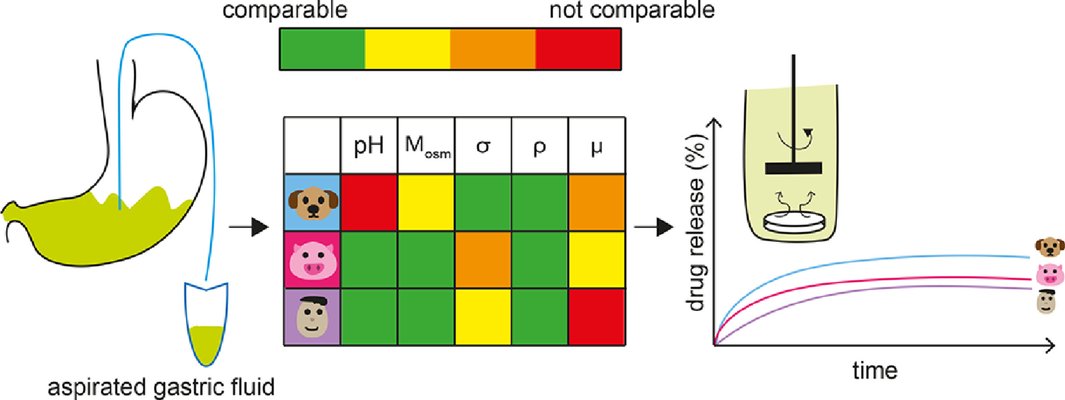Scientific papers
A comprehensive understanding of the properties of gastric fluid(s) before an in vivo pharmacokinetic investigation can significantly enhance the accuracy of predictions regarding in vivo performance. Previous characterizations of animal and human gastric fluids have utilized various methods, but often lacked thoroughness, with some properties such as density and viscosity going unreported. In this study, we harvested and characterized gastric fluids from humans, pigs, and dogs, assessing pH, viscosity, surface tension, density, and osmolarity. Our findings revealed that the variability in pH and surface tension among dogs was significantly higher than that among pigs. Moreover, gastric fluids collected from the same canine species (beagles) in two different countries (Denmark and China) exhibited surprisingly different pH values. Subsequently, an in vitro dissolution study using minitablets containing ibuprofen was conducted in diluted gastric fluids from each species. Human and porcine gastric fluids exhibited similar dissolution profiles, aligning well with biorelevant human Fasted State Simulated Gastric Fluid (FaSSGF). Conversely, differences in canine gastric fluids led to highly variable dissolution results. Through a systematic comparison with literature findings, we suggest obtaining aspirates from animals used in in vivo studies to ensure a comprehensive understanding of fluid properties influencing the performance of the formulated drug in question.

Comments
No comments posted yet.
Add a comment















